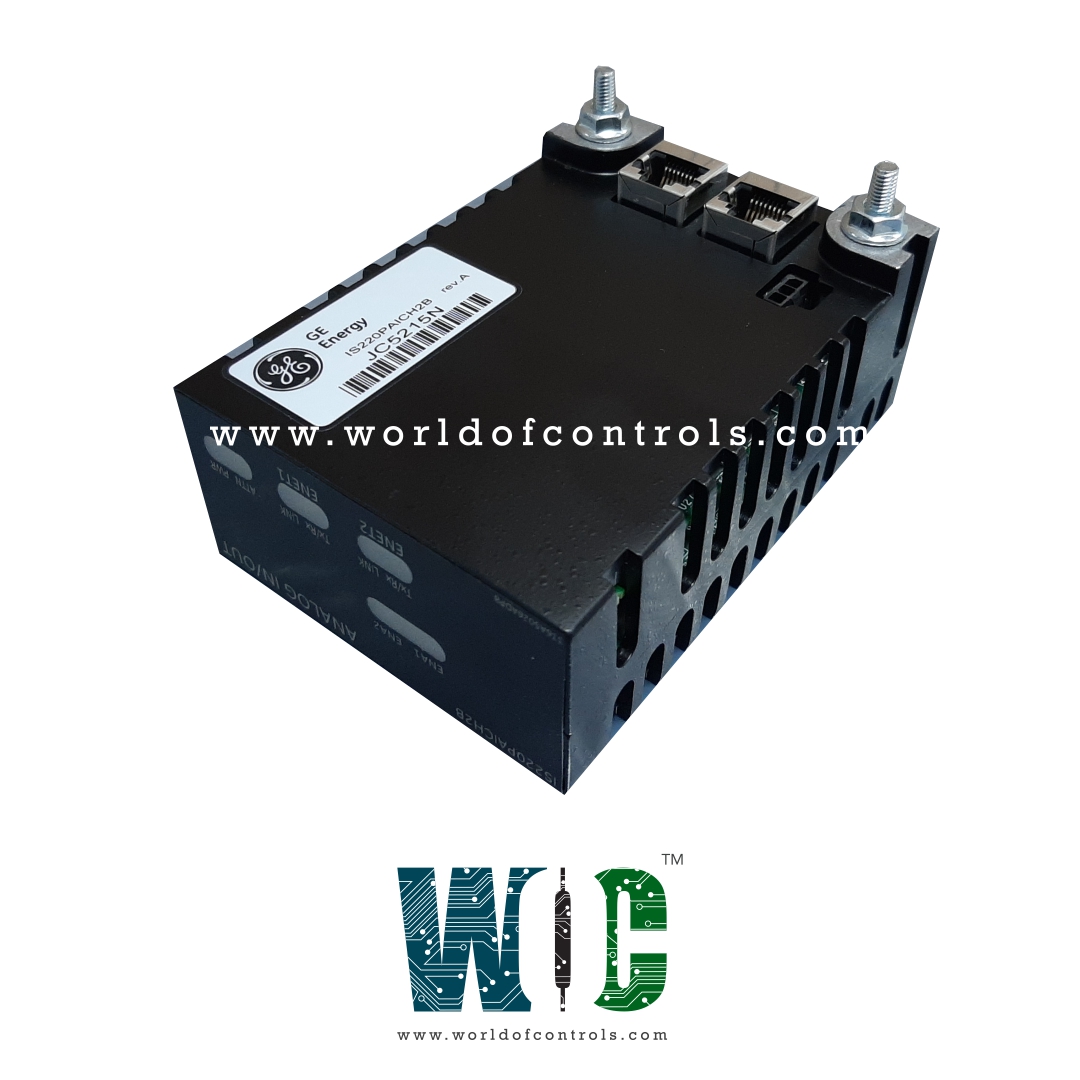
World Of Controls understands the criticality of your requirement and works towards reducing the lead time as much as possible.
IS220PAICH2B, REV B - Thermocouple Analog I/O Terminal Board is available in stock which ships the same day.
IS220PAICH2B, REV B - Thermocouple Analog I/O Terminal Board comes in UNUSED as well as REBUILT condition.
To avail our best deals for IS220PAICH2B, REV B - Thermocouple Analog I/O Terminal Board, contact us and we will get back to you within 24 hours.
SPECIFICATIONS:
Part Number: IS220PAICH2B, REV B
Manufacturer: General Electric
Series: Mark VI
Product Type: Thermocouple Analog I/O Terminal Board
Operating System: QNX
Power Requirements: +5 V dc, 6 A
Number of input channels: 12
Number of outputs: 125 V dc
Trip Solenoid Rating: 125 V dc
Power supply voltage: 28 V dc
Voltage Range: 18 - 32 VDC
Mounting: DIN-rail mounting
Technology: Surface mount
Operating temperature: 40 to 70°C
Size: 33.0 cm high x 17.8 cm
Repair: 3-7 Day
Availability: In Stock
Country of Origin: United States
Manual: GEH-6721_Vol_II
FUNCTIONAL DESCRIPTION:
IS220PAICH2B, REV B is a Thermocouple Analog I/O Terminal Board manufactured and designed by General Electric as part of the Mark VI Series used in GE Speedtronic Gas Turbine Control Systems. The Analog I/O pack (PAIC) provides the electrical interface between one or two I/O Ethernet networks and an analog input terminal board. The PAIC contains a BPPX processor board and an acquisition board specific to the analog input function. The I/O pack is capable of handling up to 10 analog inputs, the first eight of which can be configured as ±5 V or ±10 V inputs, or 4-20 mA current loop inputs. The last two inputs may be configured as ±1 mA or 4-20 mA current inputs.
The load terminal resistors for current loop inputs are located on the terminal board and voltage is sensed across these resistors by the PAIC. The PAICHI also includes support for two 0-20 mA current loop outputs. The PAICH2 includes extra hardware to support 0-200 mA current on the first output. Input to the I/O pack is through dual RJ-45 Ethernet connectors and a three-pin power input. Output is through a DC-37 pin connector that connects directly with the associated terminal board connector. Visual diagnostics are provided through indicator LEDs.
COMPATIBILITY:
CONNECTORS:
A DC-37 pin connector on the underside of the I/O pack connects directly to the discrete input terminal board. The connector contains the 24 input signals, ID signal, relay coil power, and feedback multiplex command.
WOC has the largest stock of OEM replacement parts for GE Speedtronic Gas Turbine Control Systems. We can also repair your faulty boards and supply unused and rebuilt boards backed up with a warranty. Our team of experts is available round the clock to support your OEM needs. Our team of experts at WOC is happy to assist you with any of your automation requirements. For pricing and availability on parts and repairs, kindly contact our team by phone or email.
What is a Thermocouple Analog I/O Terminal Board?
A Thermocouple Analog I/O Terminal Board is a specialized interface device used to connect thermocouples to control systems, programmable logic controllers (PLCs), or monitoring equipment. It facilitates the conversion of thermocouple signals into analog signals that can be accurately read and processed by the connected system for precise temperature measurement and control.
What types of thermocouples are supported?
Most Thermocouple Analog I/O Terminal Boards are compatible with multiple thermocouple types, such as J, K, T, E, N, R, and S. The specific thermocouple types supported depend on the design and configuration of the board, as outlined in the manufacturer’s specifications.
What are the key features of a Thermocouple Analog I/O Terminal Board?
These boards typically include multi-channel input capabilities, high accuracy, and built-in linearization for precise temperature measurements. They also feature cold junction compensation (CJC) to address environmental temperature variations, signal isolation to protect against electrical noise, and overvoltage protection for added reliability in industrial environments.